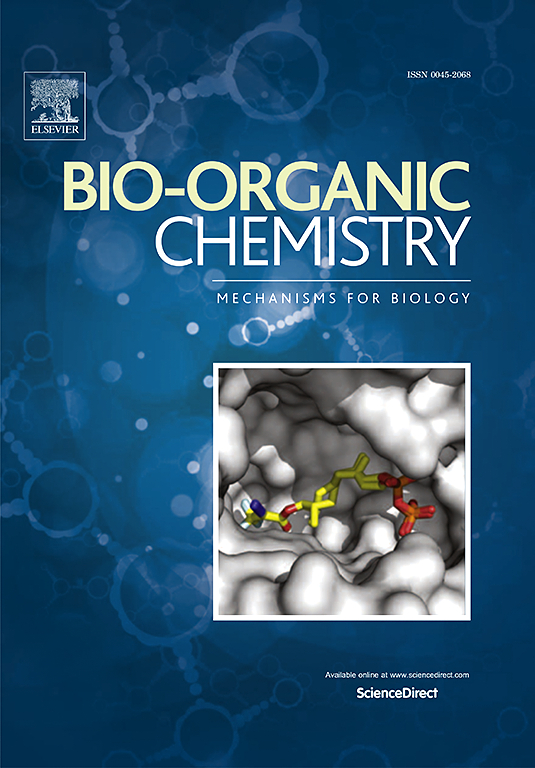Isolation of recombinant HIV-1 Rev protein and investigation of a new class of benzimidazole inhibitors capability to disrupt Rev–RRE complex
IF 4.5
2区 医学
Q1 BIOCHEMISTRY & MOLECULAR BIOLOGY
引用次数: 0
Abstract
In the present study, an efficient method for the expression and purification of recombinant HIV Rev protein with a C-terminal hexahistidine tag was proposed. Noteworthy, this method circumvents the precipitation of the protein into inclusion bodies and their subsequent aggregation during purification. It does not necessitate denaturing isolation conditions, in contrast to currently widely used protocols. As a result, protocols for HIV Rev isolation have been developed allowing the production of non-aggregated Rev protein in a good yield, high purity, and free of bacterial RNA impurities. This high-purity result became possible due to high salt extraction buffer usage. Complementary [α-32P]-labeled Rev response element (RRE) RNA has been synthesized and an inhibitor test system was developed based on Rev–RRE complex formation. We were able to reveal a novel class of potential Rev–RRE inhibitors based on dimeric benzimidazole derivatives and used those results to validate the testing system. The proposed protocols for screening and structure-activity relationship for new inhibitors of Rev binding to viral RNA broaden the scope of potential candidates for anti-HIV drug development.

重组HIV-1 Rev蛋白的分离及一类新型苯并咪唑抑制剂破坏Rev - rre复合物能力的研究
本研究提出了一种高效表达和纯化含c端六组氨酸标签的重组HIV Rev蛋白的方法。值得注意的是,这种方法避免了蛋白质在纯化过程中沉淀到包涵体和随后的聚集。与目前广泛使用的协议相反,它不需要改变隔离条件。因此,HIV Rev的分离方案已经开发出来,可以生产出产量高、纯度高、不含细菌RNA杂质的非聚集Rev蛋白。由于高盐萃取缓冲液的使用,这种高纯度的结果成为可能。合成了互补的[α-32P]标记的Rev response element (RRE) RNA,并开发了基于Rev - RRE复合物形成的抑制剂测试体系。我们能够揭示一类基于二聚苯并咪唑衍生物的新型潜在Rev-RRE抑制剂,并使用这些结果验证测试系统。新Rev结合病毒RNA抑制剂的筛选和结构-活性关系的研究方案拓宽了抗hiv药物开发的潜在候选药物范围。
本文章由计算机程序翻译,如有差异,请以英文原文为准。
求助全文
约1分钟内获得全文
求助全文
来源期刊

Bioorganic Chemistry
生物-生化与分子生物学
CiteScore
9.70
自引率
3.90%
发文量
679
审稿时长
31 days
期刊介绍:
Bioorganic Chemistry publishes research that addresses biological questions at the molecular level, using organic chemistry and principles of physical organic chemistry. The scope of the journal covers a range of topics at the organic chemistry-biology interface, including: enzyme catalysis, biotransformation and enzyme inhibition; nucleic acids chemistry; medicinal chemistry; natural product chemistry, natural product synthesis and natural product biosynthesis; antimicrobial agents; lipid and peptide chemistry; biophysical chemistry; biological probes; bio-orthogonal chemistry and biomimetic chemistry.
For manuscripts dealing with synthetic bioactive compounds, the Journal requires that the molecular target of the compounds described must be known, and must be demonstrated experimentally in the manuscript. For studies involving natural products, if the molecular target is unknown, some data beyond simple cell-based toxicity studies to provide insight into the mechanism of action is required. Studies supported by molecular docking are welcome, but must be supported by experimental data. The Journal does not consider manuscripts that are purely theoretical or computational in nature.
The Journal publishes regular articles, short communications and reviews. Reviews are normally invited by Editors or Editorial Board members. Authors of unsolicited reviews should first contact an Editor or Editorial Board member to determine whether the proposed article is within the scope of the Journal.
 求助内容:
求助内容: 应助结果提醒方式:
应助结果提醒方式:


